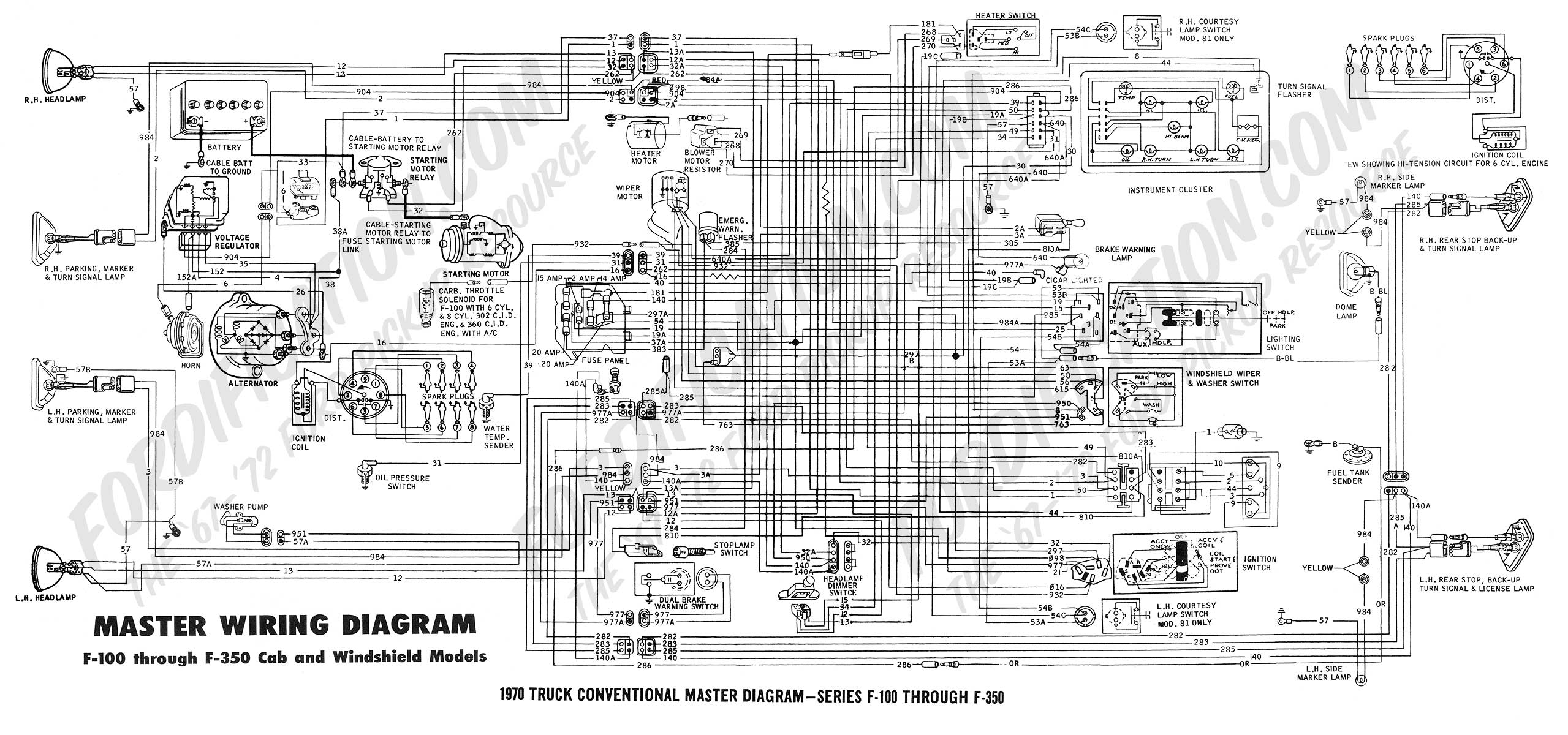However, my case could offer some insight and, hopefully, some benefit to others.
I was working on the parking brake pedal on my '68 Ranger - It was really hard to release. After lubing everything that could possibly impact it, I was wrapping it up by engaging and releasing the parking brake several times.
The last time I released it, I noticed a puff of smoke under the dash, to the right of the release handle. Immediately, I thought, "There's no wiring associated with this . . . ", then, a smoke trail appeared all the way across the underside of the dash. "Uh, there's some wiring associated with SOMETHING and it ain't happy!"
Having experienced a similar problem 40+ years ago while installing an ammeter in a '67 GTO, I knew what to do - Yank a cable off the battery. Fortunately, the cable wasn't as tight as it might have been.
After the smoke cleared. I discovered (the experienced reader already knows) that the ignition switch had separated and, as BAD luck would have it, the center pin had managed to find itself a very suitable ground. So, the yellow wire (and black/yellow wire going back to the battery) was shorted to ground. It was hot to the touch all the way back to the starter solenoid post.
The part of the switch that separated from the housing looked something like this:
Unfortunately, the exact, wrong one of the internal contacts managed to find its way to a ground.
What a revoltin' development.
I was able to check it out a few days later and discovered that the yellow wire ran several inches from the switch and into a rubber covered, factory splice where it connected to the black/yellow and a black/red(?) wire. The insulation on the yellow wire was toast. Many holes, bubbles, etc. I really didn't want to get into that rubber splice so I removed what was left of the yellow insulation, cut the wire a few inches from the switch and sleeved the wire in both directions with some yellow heat shrink tubing that I had in exactly the right size. I used a crimp butt splice to reconnect the wire ends, soldered it just to be sure and used some clear heat shrink tubing over the splice. Then, I re-taped and wrapped the wiring as best I could.
I had already checked the other wires and couldn't find any real damage. That was a relief.
All seems fine now.
HOWEVER . . .
A few weeks ago, the ignition switch acted kinda funny. Didn't seem to be just right. Now, I know why.
If your switch acts up, I'd suggest that you consider replacing it right away. Don't shrug it off.
Also, why the heck is there no protection on the power lead going from the battery (solenoid post) to the ignition switch?
I'm planning to install a circuit breaker on the fender well between the solenoid and firewall. One like this:
https://www.rockauto.com/dbphp/x,catalo ... BC40B.html
And:
http://www.cooperindustries.com/content ... akers.html
These breakers have number 10 studs and a two hole mounting bracket is attached. Just mount the breaker, cut the wire, add crimp connectors to each end and you're done. Seems perfect for this application. And, if it doesn't work out, I can use a number 10 screw and nut to bolt the crimp connectors together. Total cost is under 10 dollars including shipping. If the breaker is part of a larger order, the cost would be under five dollars.
You could use an ATC fuse holder and a 30 or 40 amp fuse. Yes, ATC fuses are available with a 40 amp rating but, I suspect, the ATC fuse holder may not be rated for 40 amps. Even so, the short length of wire involved should be fine. You could go to the Maxi version fuse if this is a concern. You'd still have spade connectors, though. I like the idea of studs and soldered crimp connectors. I think they will hold up better over time.
I chose a 40 amp breaker. Hopefully, it is large enough. If not, these are available in a 50 amp version as well. A poster in another thread said this wire carries the charging current to the battery. I don't doubt that. I looked at the wiring diagram and got lost at the voltage regulator. So, I took the other poster's word for it and decided to try a 40 amp breaker. I think the yellow wire is 12 or 14 gauge. So, I'd really like to use a 20 amp breaker but thought it might be too small. I plan to test it by attaching an 8 foot piece of wire to the breaker and shorting the other end to ground to simulate the switch separation event. If the breaker opens, I'll be satisfied. Then, if the breaker remains closed under normal running conditions, I'll be set.
Leaving the wiring as it came from the factory is a fire waiting to happen.
Had I not seen the initial puff of smoke, I could have closed the door and walked away - I was done. I could have lost two trucks and a garage and lots of other stuff. My battery will remain disconnected until the circuit breaker is installed.
The ignition switch is the weak link in this situation. And, all in all, the wiring held up pretty well. But, it would have been pretty much of a non-issue if Ford had added a fuse link or some other form of circuit protection to the hot wire going to the switch.





